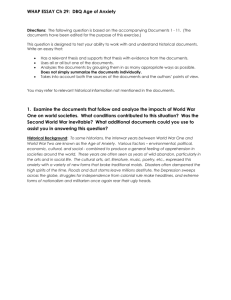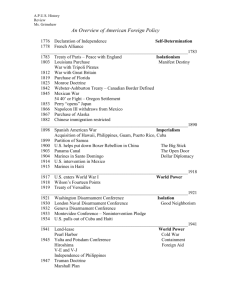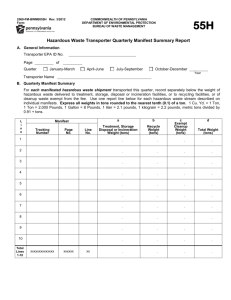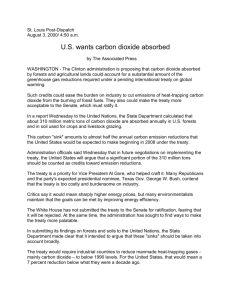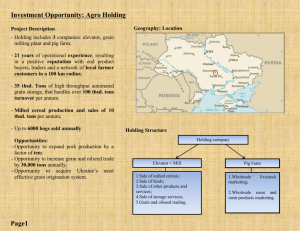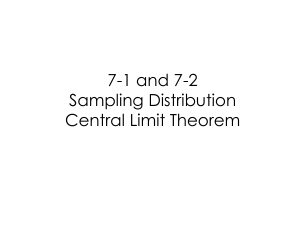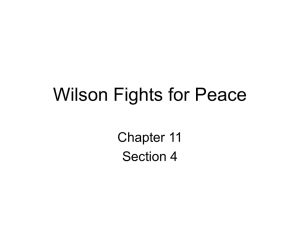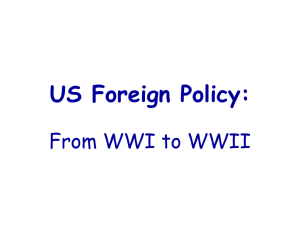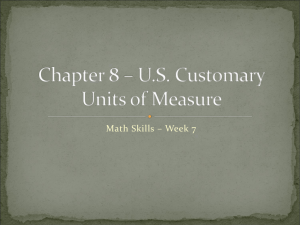Chapter 171 The Search for Peace PPT
advertisement
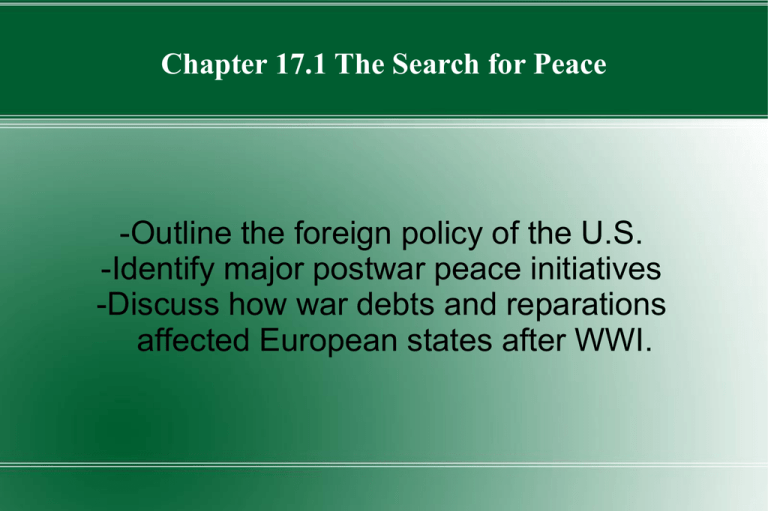
Chapter 17.1 The Search for Peace -Outline the foreign policy of the U.S. -Identify major postwar peace initiatives -Discuss how war debts and reparations affected European states after WWI. The United States from 1920-1930s Population = 106,021,537 ---> 123,202,634 88.7% White, 9.7% Black, 1.2% Hispanic, 0.3% American Indian, 0.1% Chinese, 0.1% Japanese (population of states not territory) Immigration rates go from 800,000 yearly (1921) to ~200,000 (1929) Unemployment Rates = 8.9% (1921) to 4.9% (1928) to 25+% (1933) GDP = 0.69 trillion (1921) to 0.99 trillion (1929) to 0.7 trillion (1933) 17.1 The Legacies of World War I Many Americans were disillusioned after WWI. 112,000 Americans had died in the war. Europe still faced much chaos, Treaty of Versailles did not seem to work. Many feared the Federal Govt. had grown too powerful. Many thought they had been dragged into the war by banks and war industries (ammunition, steel, etc.) Many Americans turned to Isolationism to guide their country's foreign politics. Public opposed joining International Organizations (League of Nations, World Court) Public opposed selling war materials to belligerent powers. Isolationism and Diplomacy - Many Americans sought to work with other countries through bilateral diplomacy to achieve peace. - Groups like Feminists encouraged disarmament among fellow countries. Jeannette Rankin Emily Greene Balch Jane Addams The Washington Conference – Nov. 1921-Feb. 1922 -The Harding Administration (1921-1923) sought to cooperate with other countries in the Pacific. - Nine countries attended the Conference (U.S., U.K., France, Japan, China, Italy, Belgium, Netherlands, and Portugal) - Goal was to reduce naval forces among attending countries. - First disarmament conference in the world. Charles Evan Hughes The Washington Conference - Outcomes - The Five-Power Naval Treaty - U.S. And U.K. Would keep their navies the same size as each other, - Japan would have a navy 60% of the size of the U.K.'s. - France and Italy would have navies each 50% the size of Japan's. - The Four-Power Treaty - The U.S., U.K., France, and Japan pledged to respect each other's territory and colonies in the Pacific. - The Nine-Power Treaty - All countries present pledged to guarantee China's territorial integrity and uphold the “Open Door Policy”. The Five-Power Naval Treaty Capital Ships Aircraft Carriers The United States of America 525,000 total tons 135,000 total tons The United Kingdom 525,000 total tons 135,000 total tons Empire of Japan 315,000 total tons 81,000 total tons France 175,000 total tons 60,000 total tons Italy 175,000 total tons 60,000 total tons The Kellogg-Briand Pact (April 6th, 1927) - French foreign minister Aristide Briand and U.S. Secretary of State Frank Kellogg made an agreement to outlaw war. - Kellogg suggested that the treaty be offered to all other countries. - 62 countries eventually sign on. - No actual means of enforcement, countries had to abstain from war on their own. Causes of World Tension - Japanese Invasion of Manchuria (September 1931) - Many Americans wanted to economically boycott Japan in response, but U.S. Leaders refused. - The 1932 League of Nations World Disarmament Conference - Partially as a response to military buildup in Germany, Italy, and Japan. - No consensus reached. Japan and Germany withdraw from the League in 1933. Causes of World Tension - War Debt - Allied countries owed the United States over $10 billion dollars in debt (110 billion in 2011 dollars) - Many European leaders insisted the U.S. should cancel their debt. - The U.S. canceled some debts but not all. - European countries still struggled to pay their debts. - Still had to repair their infrastructure from the war (farms, factories, cities) - They depended on reparation from Germany to make debt payments to the U.S. The Post-War German Economy - Germans had lost % of territory, % coal production, iron ore% - Germany owed $32 billion in war reparations. - Germany attempted to pay reparations by borrowing money from Britain and overprinting, leading to hyperinflation. - France and Belgium would occasionally take whole factories out of Germany to cover reparation payments. The Post-War German Economy 1-million mark used as notepaper Children playing with marks The Post-War German Economy - Gustav Stresemann (1878-1929) was Chancellor of Germany in 1924. - Increased cooperation with France and Italy, ended German resistance to Rhineland occupation. -Ended hyperinflation in Germany by introducing a new currency (1 rentenmark = 10*12 marks) - 1924-1929 became the “Golden Twenties” of Germany. -Dealt with the Munich Beer Hall Putsch led by Adolf Hitler leniently (November 1923).

